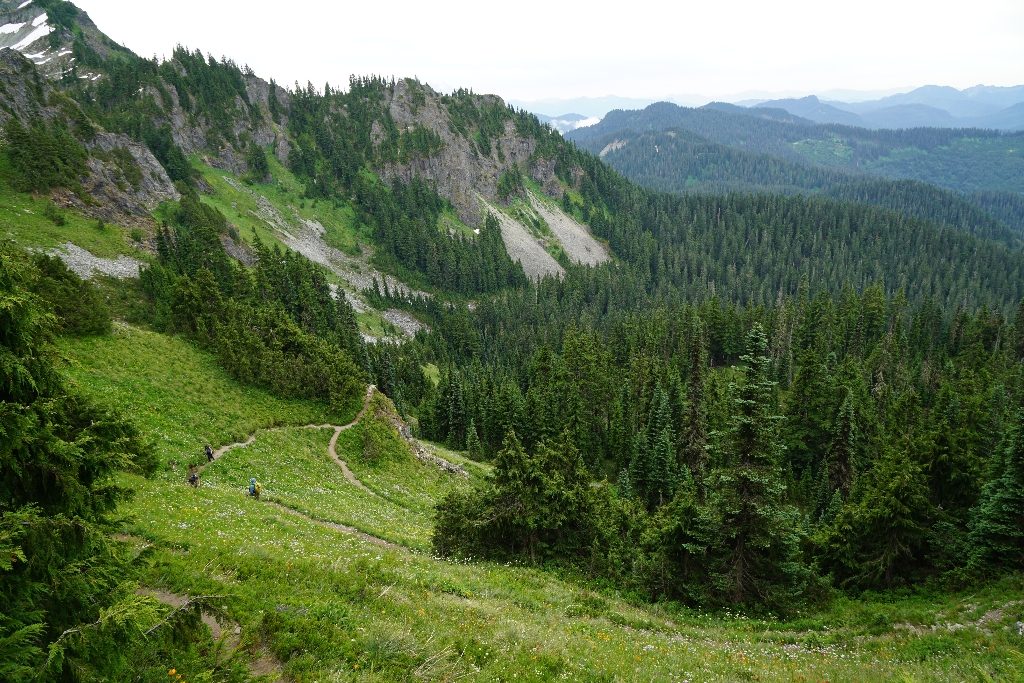
Season: Summer (May - October)
Longmire is open year-round, but this trail can be hazardous in winter.
Eagle Peak Trailhead is located in Longmire on the east side of the Nisqually River. If entering Longmire from the Nisqually Entrance, drive past the National Park Inn, and turn right at the two-story building with the flagpole. Continue straight through the employee housing area and across the historic Longmire Suspension Bridge over the Nisqually River. The trailhead is located 300 feet past the suspension bridge. There is a small pullout for parking near the trailhead or continue a short distance down the road to park in front of the Longmire Community Building.
Eagle Peak Trail is 7.2 miles roundtrip with 2,955 feet of elevation gain. For the first two miles the trail ascends steeply through dense forest to a small stream, then continues another mile to a meadow. Beyond the meadow the trail is much steeper and rocky as it climbs the final 0.5 mile to the 5,700 feet saddle where the trail ends. Use extreme caution when you reach the saddle. This area is exposed and a fall could be deadly. Snow can also linger well into June, with dangerous snow cornices possibly hiding the edges of the cliffs.
This peak was originally known as Sim-layshe, a Native American word for eagle. When the Longmire family settled nearby, George Longmire anglicized the name to Eagle Peak. From the Eagle Peak Saddle look north for views of Mount Rainier and the buildings in the Paradise Area. Look south for panoramic views of the Nisqually River Valley and surrounding Cascade Range, with Mount St. Helens and Mount Adams in the distance. Subalpine meadows along the trail on the final approach to the saddle can have excellent wildflower displays in summer, with peak bloom typically in late July/early August.
While Longmire is open year-round, snow can make this trail hazardous in winter. Winter hikers and snowshoers must have experience with navigation and avalanche terrain.
Backpacking
There is no designated camp along this trail nor atop the Tatoosh Range. Current trail conditions are available park-wide from wilderness information centers, ranger stations, and visitor centers. Fires are prohibited. No pets on trails. Treat water before drinking.
Is there something we missed for this itinerary?
Itineraries across USA


















































